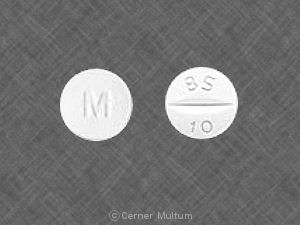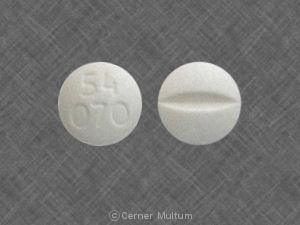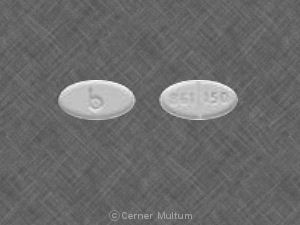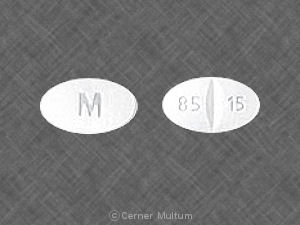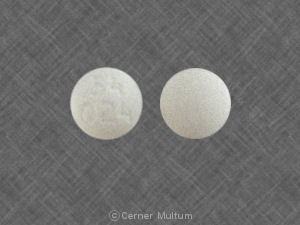What is the most important information I should know about flecainide?
You should not use this medication if you are allergic to flecainide, or if you have certain heart conditions, especially "AV block" (unless you have a pacemaker).
Before using flecainide, tell your doctor if you have congestive heart failure, a heart condition called "sick sinus syndrome," an electrolyte imbalance, liver disease, kidney disease, if you have a pacemaker, or if you have had a heart attack within the past 2 years.
You will need to receive your first few doses of flecainide in a hospital setting in case the medication causes serious side effects. Your heart rate will be constantly monitored using an electrocardiograph or ECG (sometimes called an EKG). This machine measures electrical activity of the heart.
Call your doctor at once if you have a serious side effect such as weak pulse, slow breathing, fast or uneven heartbeat, feeling like you might pass out, feeling short of breath, swelling, rapid weight gain, confusion, extreme thirst, increased urination, muscle weakness, or jaundice (yellowing of the skin or eyes).
What is flecainide?
Flecainide is in a group of drugs called Class IC anti-arrhythmics. It affects the way your heart beats.
Flecainide is used in certain situations to prevent serious heart rhythm disorders.
Flecainide may also be used for other purposes not listed in this medication guide.
What should I discuss with my healthcare provider before taking flecainide?
You should not use this medication if you are allergic to flecainide, or if you have certain heart conditions, especially "AV block" (unless you have a pacemaker).
Before using flecainide, tell your doctor if you are allergic to any drugs, or if you have:
- congestive heart failure;
- a heart condition called "sick sinus syndrome";
- an electrolyte imbalance;
- liver disease;
- kidney disease;
- if you have a pacemaker; or
- if you have had a heart attack within the past 2 years.
If you have any of these conditions, you may need a dose adjustment or special tests to safely use flecainide.
FDA pregnancy category C. This medication may be harmful to an unborn baby. Tell your doctor if you are pregnant or plan to become pregnant during treatment.
Flecainide can pass into breast milk and may harm a nursing baby. Do not use this medication without telling your doctor if you are breast-feeding a baby.
How should I take flecainide?
You will need to receive your first few doses of flecainide in a hospital setting in case the medication causes serious side effects. Your heart rate will be constantly monitored using an electrocardiograph or ECG (sometimes called an EKG). This machine measures electrical activity of the heart.
Take flecainide exactly as it was prescribed for you. Do not take the medication in larger amounts or for longer than recommended by your doctor. Follow the directions on your prescription label.
Your doctor may occasionally change your dose to make sure you get the best results from this medication.
To be sure this medication is helping your condition, your blood may need to be tested on a regular basis. Do not miss any scheduled appointments.
Store flecainide at room temperature away from moisture, heat, and light.
What happens if I miss a dose?
Take the missed dose as soon as you remember. If it is almost time for your next dose, wait until then to take the medicine and skip the missed dose. Do not take extra medicine to make up the missed dose.
What happens if I overdose?
Seek emergency medical attention if you think you have used too much of this medicine.
Overdose symptoms may include nausea, vomiting, slow heart rate, feeling like you might pass out, or seizure (convulsions).
What should I avoid while taking flecainide?
Follow your doctor's instructions about any restrictions on food, beverages, or activity while you are using flecainide.
What are the possible side effects of flecainide?
Get emergency medical help if you have any of these signs of an allergic reaction: hives; difficulty breathing; swelling of your face, lips, tongue, or throat.
Call your doctor at once if you have a serious side effect such as:
- slow heart rate, weak pulse, fainting, slow breathing (breathing may stop);
- dizziness, fainting, fast or pounding heartbeat;
- feeling short of breath, even with mild exertion;
- swelling, rapid weight gain;
- low potassium (confusion, uneven heart rate, extreme thirst, increased urination, leg discomfort, muscle weakness or limp feeling);
- high potassium (slow heart rate, weak pulse, muscle weakness, tingly feeling);
- pale skin, easy bruising or bleeding, unusual weakness; or
- jaundice (yellowing of the skin or eyes).
Less serious side effects may include:
- dizziness;
- tremor or shaking;
- headache;
- anxiety or depression;
- vision problems;
- nausea, vomiting, stomach pain;
- diarrhea, constipation; or
- numbness or tingling.
This is not a complete list of side effects and others may occur. Tell your doctor about any unusual or bothersome side effect. You may report side effects to FDA at 1-800-FDA-1088.
What other drugs will affect flecainide?
Before taking flecainide, tell your doctor if you are taking any of the following medicines:
- cimetidine (Tagamet),
- digoxin (digitalis, Lanoxin);
- a diuretic (water pill);
- verapamil (Verelan, Calan, Isoptin);
- seizure medication such as carbamazepine (Carbatrol, Tegretol), phenobarbital (Solfoton), or phenytoin (Dilantin);
- other heart rhythm medications such as amiodarone (Cordarone), disopyramide (Norpace), or quinidine (Quinaglute, Quinidex); or
- a beta-blocker such as atenolol (Tenormin), labetalol (Normodyne, Trandate), metoprolol (Lopressor, Toprol), propranolol (Inderal, InnoPran), sotalol (Betapace), timolol (Blocadren), and others.
This list is not complete and there may be other drugs that can interact with flecainide. Tell your doctor about all your prescription and over-the-counter medications, vitamins, minerals, herbal products, and drugs prescribed by other doctors. Do not start a new medication without telling your doctor.
Where can I get more information?
Your pharmacist can provide more information about flecainide.
Remember, keep this and all other medicines out of the reach of children, never share your medicines with others, and use this medication only for the indication prescribed.
Every effort has been made to ensure that the information provided by Cerner Multum, Inc. ('Multum') is accurate, up-to-date, and complete, but no guarantee is made to that effect. Drug information contained herein may be time sensitive. Multum information has been compiled for use by healthcare practitioners and consumers in the United States and therefore Multum does not warrant that uses outside of the United States are appropriate, unless specifically indicated otherwise. Multum's drug information does not endorse drugs, diagnose patients or recommend therapy. Multum's drug information is an informational resource designed to assist licensed healthcare practitioners in caring for their patients and/or to serve consumers viewing this service as a supplement to, and not a substitute for, the expertise, skill, knowledge and judgment of healthcare practitioners. The absence of a warning for a given drug or drug combination in no way should be construed to indicate that the drug or drug combination is safe, effective or appropriate for any given patient. Multum does not assume any responsibility for any aspect of healthcare administered with the aid of information Multum provides. The information contained herein is not intended to cover all possible uses, directions, precautions, warnings, drug interactions, allergic reactions, or adverse effects. If you have questions about the drugs you are taking, check with your doctor, nurse or pharmacist.
Copyright 1996-2018 Cerner Multum, Inc. Version: 3.10. Revision date: 12/15/2010.


